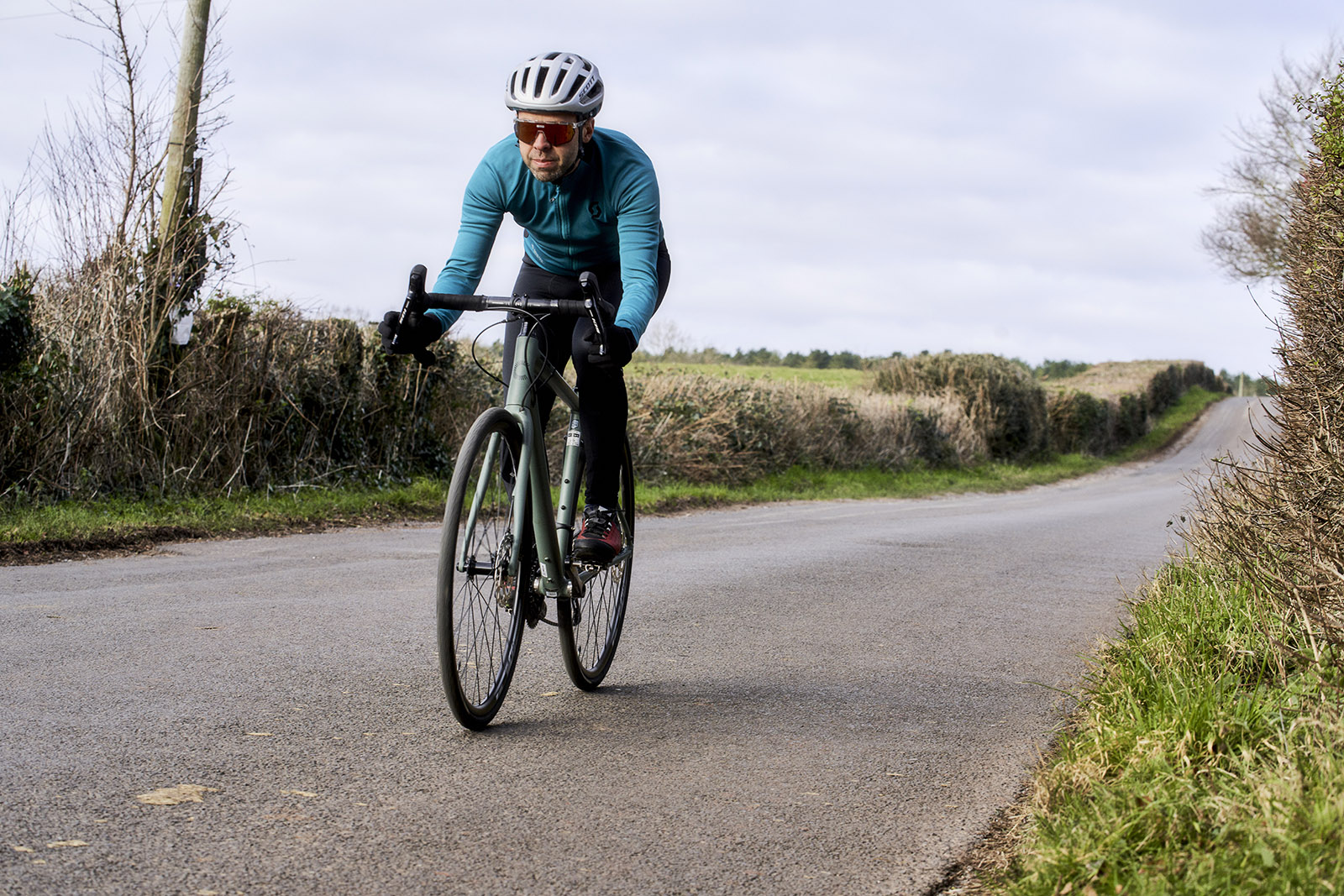Strava and disc brakes are co-conspirators
The winter bike is dead and the prime suspect is Professor Zwift with a smart trainer in the pain cave.
Accomplices in this joint enterprise are Strava and disc brakes.
But does it matter that winter bikes are disappearing from grimy hibernal roads?
I think so. I’ll miss the bikes and what they represent.
Better than the real thing
Turbo training used to be a means to an end: a way to train when outdoor conditions were unfavourable.
However, the gamification of indoor cycling has led some cyclists to prefer it to the real thing.
On the group-ride grapevine, I hear stories of more and more cyclists actively choosing the turbo over an outdoor ride, even when not constrained by time.
Their smart trainer has replaced their winter bike. Why own a dedicated bike for winter road cycling when you won’t be doing any?
And when they venture outdoors, it’ll be in weather fair enough for their best road bike.
I sympathise with some of their reasons. But I never find an indoor ride delivers anywhere near the same mood-boosting endorphins as a few hours on the road – often, crummy conditions increase the satisfaction.
‘Stravanoia’

The second suspect in the winter bike murder mystery is Sergeant Strava.
More specifically, it’s ‘Stravanoia’ – the anxiety you feel that your training is inadequate compared to others’.
Some of them may be elite or professional riders, so it’s frankly ridiculous, but real nonetheless.
Stravanoia has helped kill off the winter bike because people are worried about their average speed, even on a weighty machine as aerodynamic as a tuk-tuk.

This can lead some to bring a gun to a knife fight and ride a mudguard-less summer bike on a winter chaingang.
Rather than display such poor group ride etiquette, others may decide not to ride outside at all, for fear of looking slow on Strava.
This is a great shame. The majority of your followers won’t notice or judge your speed anyway, and if they do, so what?
A slow ride’s better than no ride, so don’t deprive yourself of the enjoyment. You could make your steadier rides private anyway.
Disc brakes put a stop to it

Or was it Dr Disc Brake with a set of razor-sharp rotors that did for the winter bike?
Winter bikes were built around a quality, but affordable rim-brake frameset: either a no-frills ‘training’ frameset, such as the racer’s favourite Dolan Preffisio; or a mid-tier model from a few seasons back.
The ubiquity of road bike disc brakes has made both these options harder to find, apart from second-hand.
Building up or buying a disc-brake winter bike will be more expensive than it used to be with rim brakes.
This higher cost undermines the financial case for winter bikes, which was to save money by not chewing through the pricier components on your best bike.
In addition, more people’s best bikes will have disc brakes, making them better to ride all year round.
The new winter bikes

If the winter bike is dead, what’s replaced it, apart from indoor cycling?
Modern endurance road bikes, with their long-distance geometry, disc brakes, wide tyres (often tubeless) and mudguard fittings, make superb winter bikes.
So do the best steel road bikes, such as my Fairlight Strael 3.0. Fitted with Portland Design Works fenders and a dynamo, it excels in all seasons.

Thirdly, gravel bikes can double as winter bikes, particularly at the adventure end of the market.
I’ve tried all of these alternatives and each is an enjoyable (if not always that affordable) way to ride outdoors through winter.
It’s no surprise, then, that more cyclists are overlooking the quintessential winter bike. After all, I’m one of them.
But I still think we’re losing something with its decline.
Why should we care?

So Zwift, Strava and disc brakes are to blame for the demise of the winter bike. But should we care?
I say yes. I don’t want to overly romanticise winter bikes (my £450 Genesis Volant has departed, but I can’t say dearly).
I’ll miss their unpretentious functionality, though. Without much whizzy kit, they keep you riding when the weather makes it easy not to.
As a rare example of utilitarianism in the increasingly complicated world of bike tech, mechanics won’t be the only people to lament their loss either.
I’ll also miss what winter bikes represent. I strongly associate them with club cycling, where seasoned members clock mile after mile on winter bikes through the cold months.

There’s a lot to say for this dogged approach to cycling training, and the camaraderie and support of the volunteer-led structure.
But statistics from the UK’s Department of Transport show dwindling cycling participation, suggesting this grassroots scene is under threat.
The dismal state of UK cycling infrastructure and the cyclist vs driver culture wars are principally to blame. Yet I suspect the drop-off is also linked to people not having the right bike for our climate.
Worrying that bad weather will wreck your components puts up a barrier to riding that the winter bike removes. It’s time we resurrect it.